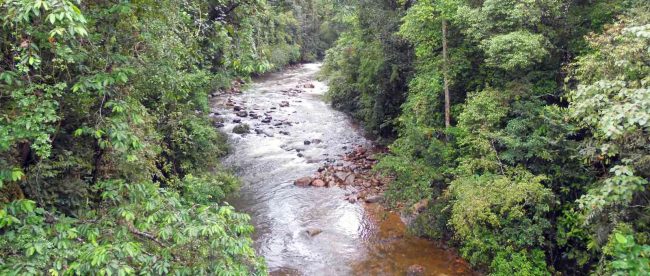Losing natural wealth at riverine of Nuwara wewa
Ancient temples, partially destroyed stone structures, gigantic dagobas, and granite stone pillars are coming into one’s mind upon hearing the word “Anuradhapura“. in fact, that is the picture engraved in our mind about Anuradhapura. Anuradhapura is the first capital of Sri Lanka, which dates back to the 3rd century BC. Anuradhapura is divided into 2 regions namely the new city of Anuradhapura and the old city of Anuradhapura. The old city of Anuradhapura can be identified as an archaeological zoo and it harbours many dozens of temples, stupas, dagobas, gardens, palaces and many other ancient monuments belonging to the ancient Sri Lankan culture.
Due to its historical importance, Anuradhapura is a part of most Sri Lankan tour packages and a large number of tourists visit Anuradhapura to see the ruins of the ancient city, where they encounter hundreds of temples, dagobas, places and many other ancient structures that were built many centuries ago. Usually, multi-day Sri Lanka tour packages include Anuradhapura. However, travellers can book Sri Lanka day tours to visit Anuradhapura from most beach resorts on the west coast.
Anuradhapura is the cradle of Buddhism and it had been predominantly a Buddhist city with a large number of Buddhist temples complexes and teaching places. This UNESCO world heritage site is home to many important Buddhist temples such as Jatawanrama, Abhayagiriya and Mirisawetiya. These Buddhist temples are popular Buddhist pilgrimage sites and are included in Sri Lanka Buddhist tours.
The ancient culture of Sri Lanka flourished in agriculture, which had been the main income for the people. There had been an agriculture-dependent advanced civilization in the past which was initially based in Anuradhapura. Advanced irrigation system with huge reservoirs, canals and lakes crisscrossing the dry zone of Sri Lanka was the lifeblood of the ancient civilization, which still serve the island.
This blog post is dedicated to the ancient engineers, who achieved this great feat by building Nuwara Wewa or Nuwara Reservoir. If you head on to Anuradhapura, don’t forget to have a look into this engineering feat.
Nuwara wewa or Nuwara reservoir is situated in the historical city of Anuradhapura, which is one of the most important irrigation feats of the ancient engineers of Sri Lanka. According to the historical information the tank was built in the 1st century BC. The tank was built under the patronage of King Vattagamini Abhaya. The bund (dam) of this gigantic tank is 3 miles long and the average height is estimated to be 37 feet.
It shows the great feats achieved by ancient engineer
Nuwara reservoir is a great feat achieved by the ancient engineer, even without the cutting-edge technology we have today. This reservoir is a classic example of the advanced irrigation network that existed on the island many thousands before.
The water surface of the tank spreads over 3180 hectares of land in the ancient city of Anuradhapura. The water of Malwatu River was diverted to the tank by a dam across the river. This ancient tank is still being used for irrigation and to fulfil other water requirements of the people in the area.
The tank and the immediate surrounding had been an important area with rich bio-diversity that developed for thousands of years. But today the Eco-system around the tank is largely changed and its value has been severely affected. The riverine areas of the tanks were harbouring a large number of fauna and flora species, but by 2003 most of this riverine environment was destroyed due to human activities.
Unfortunately, the valuable forest cover of the catchment area around the tank is also removed during the past few decades. The vegetation of the surrounding area is comprised of 25 species of hardwood trees and several species of shrubs.
With the expanding human pollution, the usage of forest resources is also significantly increased in the past. The trees are removed get wood, and firewood and, some people remove them for agricultural purposes. Here you can see the forest is used in an unsustainable manner so that during the period 1956 to 2003, almost the whole valuable forest in the catchment area is removed.






